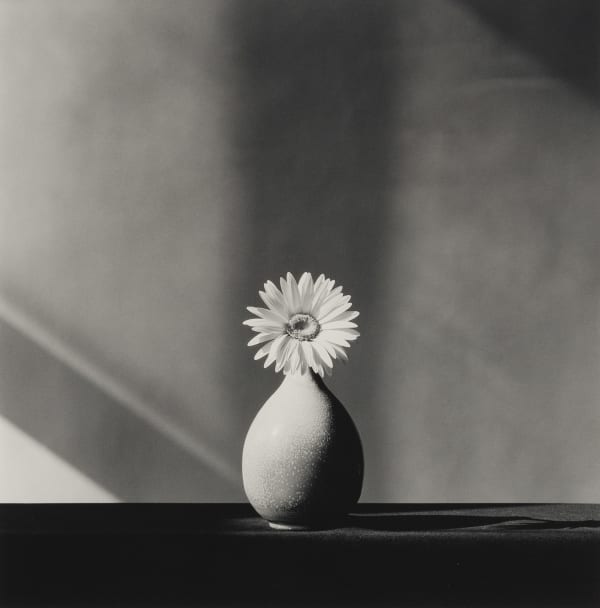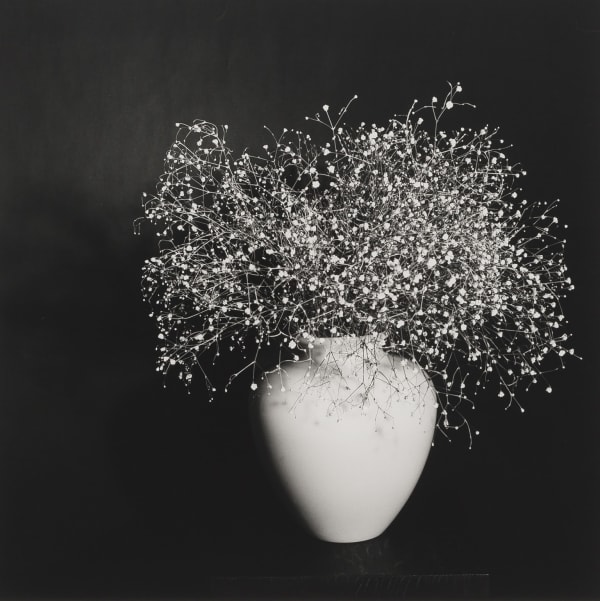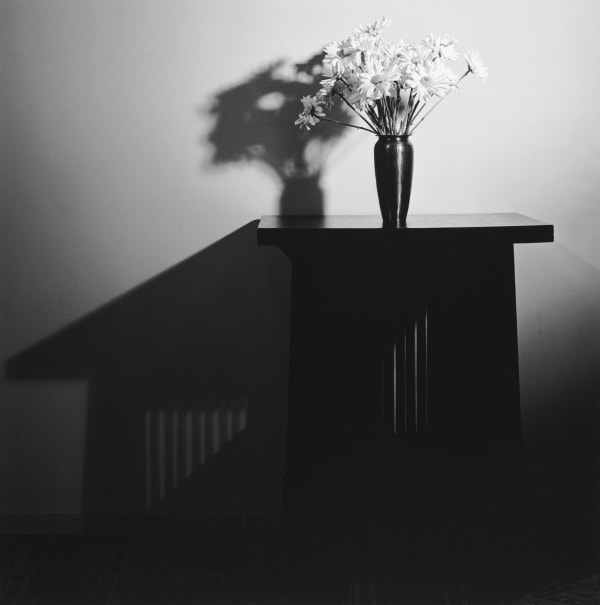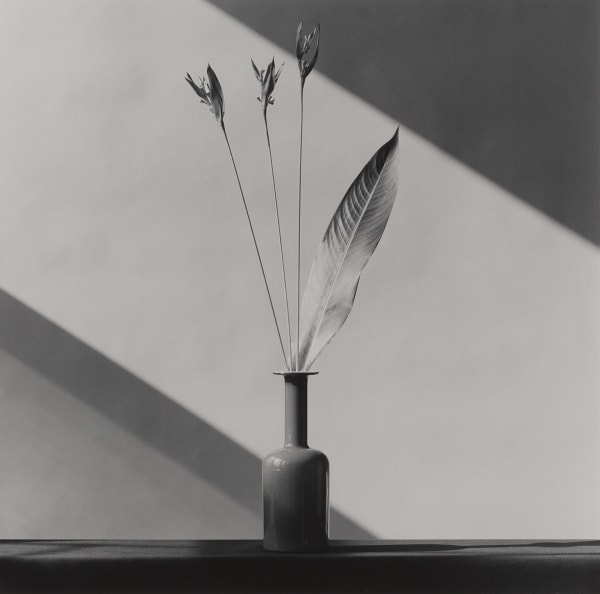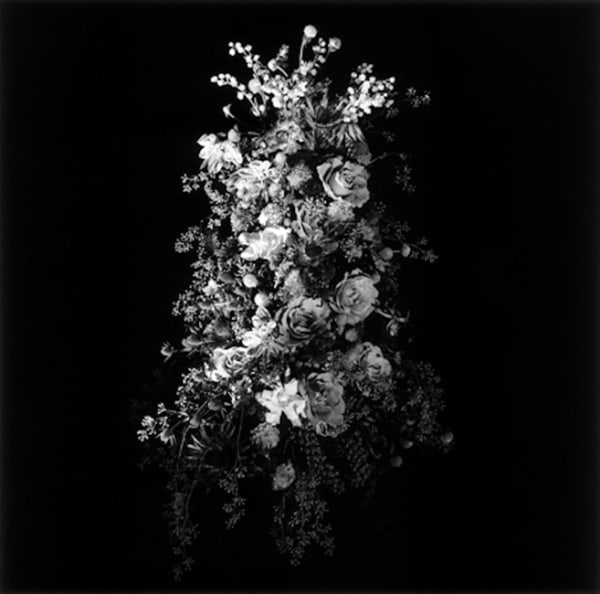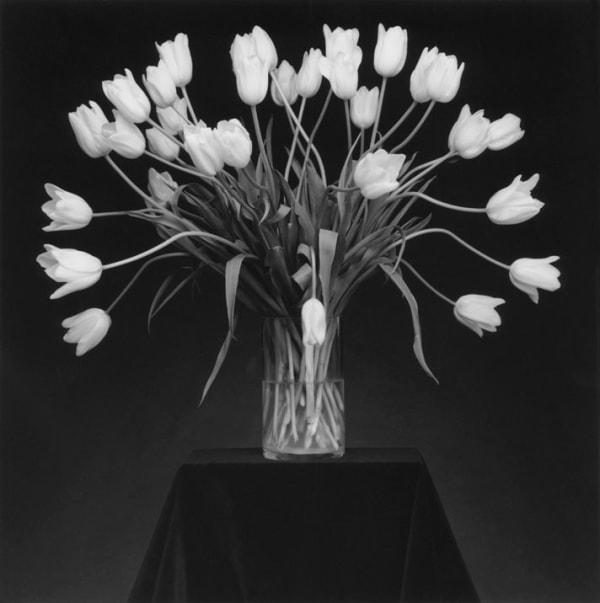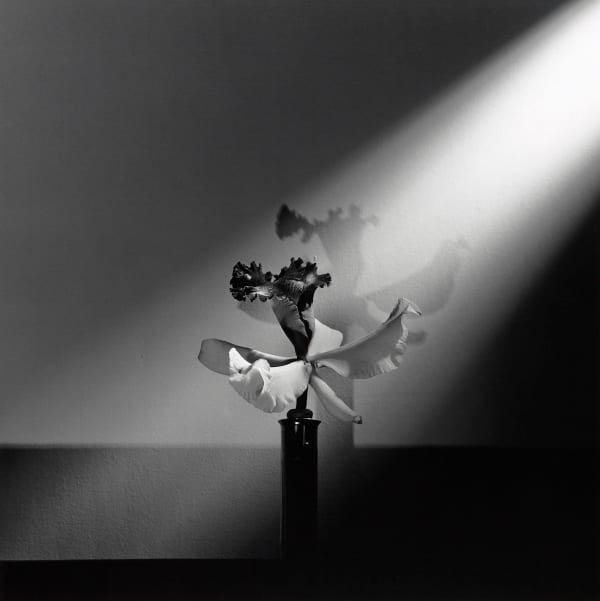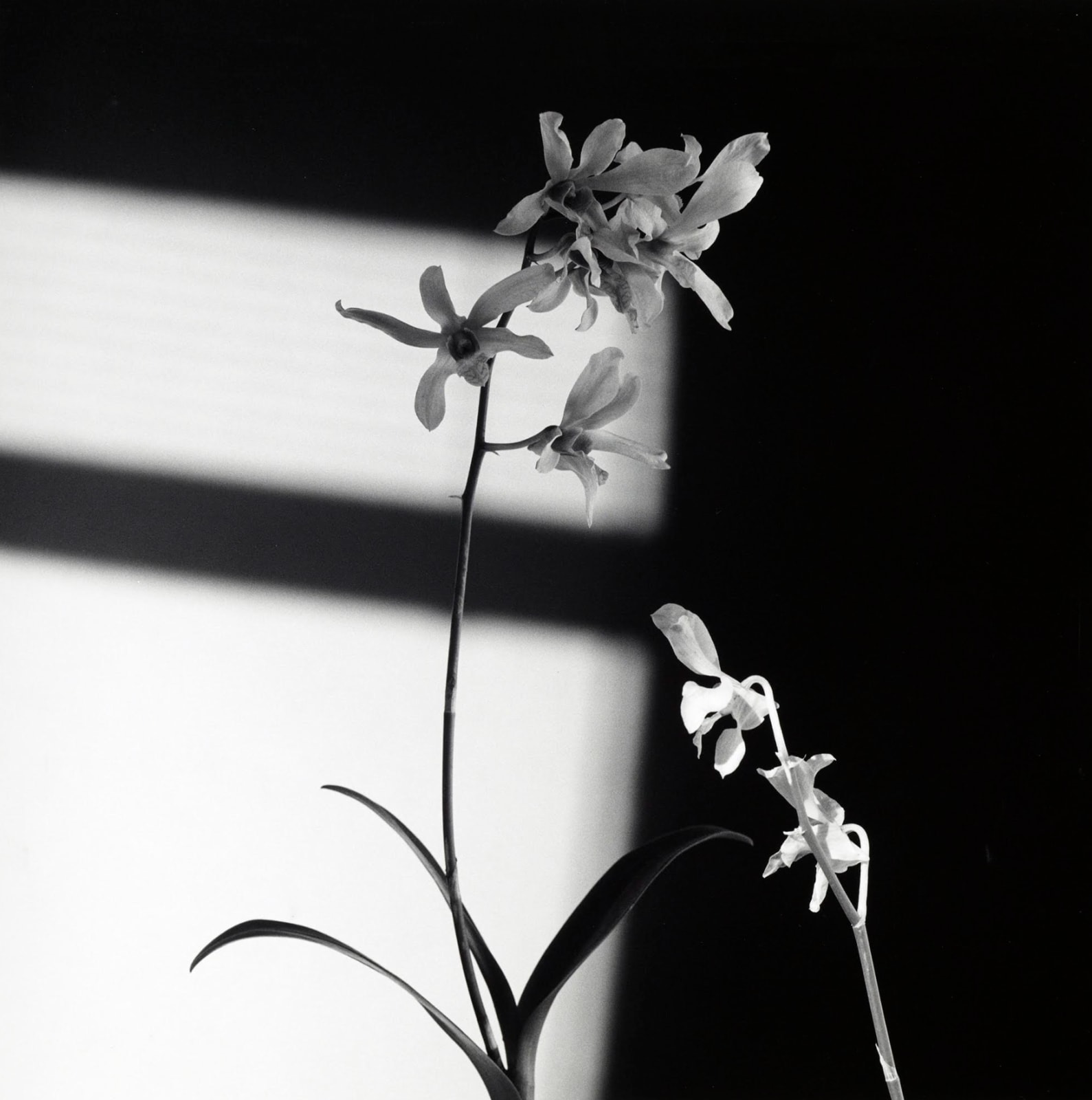
Robert Mapplethorpe
61 x 50.8 cm
Mapplethorpe's flowers are often arranged with great precision, each petal and curve considered with the eye of a sculptor. In these works, he elevates the flower to the status of a work of art, casting it in the role of both object and subject. Flowers are often seen as symbols of beauty, fragility, and temporality, and Mapplethorpe's photographs capture these themes while exploring the tension between nature’s fleetingness and the artist's ability to immortalize it in black and white. The flowers, often photographed in extreme close-up, become almost abstract, with their intricate details—the veins, the folds, the light reflecting off their delicate surfaces—emphasized to the point where they transcend their natural origins and become something more profound, more eternal.
The choice to photograph flowers in black and white rather than color was also a deliberate decision on Mapplethorpe's part. By removing the distraction of color, he allowed the viewer to focus more intently on the shape, texture, and form of the flower. The sharp contrasts between light and shadow, the play of lines and curves, and the tonal richness of the black-and-white palette created a sense of depth and structure that rendered the flowers almost sculptural in nature. Whether it was the curving elegance of a lily or the delicate petals of an orchid, Mapplethorpe’s flowers seemed to exist not just in the realm of the visual, but in the emotional and intellectual as well.
In these works, Mapplethorpe brought the same precision and artistry to his floral subjects as he did to his portraits and nude studies. The flowers are both sensual and austere, delicate and bold, creating a complex interplay between beauty and fragility. In some ways, they serve as a mirror to the human body, with their curves, lines, and textures suggesting the same sensuality and grace that characterize much of his other work. As Mapplethorpe himself explained, his goal was to "make things beautiful"—and through his flowers, he certainly succeeded, using his camera to capture the timeless elegance of nature in all its forms.
-
 Robert MapplethorpeAfrican Daisy, 1982
Robert MapplethorpeAfrican Daisy, 1982 -
 Robert MapplethorpeBaby's Breath, 1978
Robert MapplethorpeBaby's Breath, 1978 -
 Robert MapplethorpeCalla Lilies, 1983 / 2003
Robert MapplethorpeCalla Lilies, 1983 / 2003 -
 Robert MapplethorpeCalla Lilies, 1985
Robert MapplethorpeCalla Lilies, 1985 -
 Robert MapplethorpeCalla Lily, 1986
Robert MapplethorpeCalla Lily, 1986 -
 Robert MapplethorpeCalla Lily, 1987
Robert MapplethorpeCalla Lily, 1987 -
 Robert MapplethorpeDaisies, 1978
Robert MapplethorpeDaisies, 1978 -
 Robert MapplethorpeDaisies, 1978
Robert MapplethorpeDaisies, 1978 -
 Robert MapplethorpeFlower, 1982
Robert MapplethorpeFlower, 1982 -
 Robert MapplethorpeFlower Arrangement, 1984
Robert MapplethorpeFlower Arrangement, 1984 -
 Robert MapplethorpeOrchids, 1980
Robert MapplethorpeOrchids, 1980 -
 Robert MapplethorpeTulips, 1988
Robert MapplethorpeTulips, 1988 -
 Robert MapplethorpeLilies, 1984
Robert MapplethorpeLilies, 1984 -
 Robert MapplethorpeOrchids, 1983
Robert MapplethorpeOrchids, 1983 -
 Robert MapplethorpeParrot Tulip in Black Vase, 1985
Robert MapplethorpeParrot Tulip in Black Vase, 1985 -
 Robert MapplethorpeIris, 1982
Robert MapplethorpeIris, 1982 -
 Robert MapplethorpeLily, 1979
Robert MapplethorpeLily, 1979 -
 Robert MapplethorpeTulip and Thorn, 1985
Robert MapplethorpeTulip and Thorn, 1985 -
 Robert MapplethorpeOrchid, 1977
Robert MapplethorpeOrchid, 1977 -
 Robert MapplethorpeSnapdragons, 1979
Robert MapplethorpeSnapdragons, 1979
Join our mailing list
* denotes required fields
We will process the personal data you have supplied in accordance with our privacy policy (available on request). You can unsubscribe or change your preferences at any time by clicking the link in our emails.
This website uses cookies
This site uses cookies to help make it more useful to you. Find out more about cookies.
